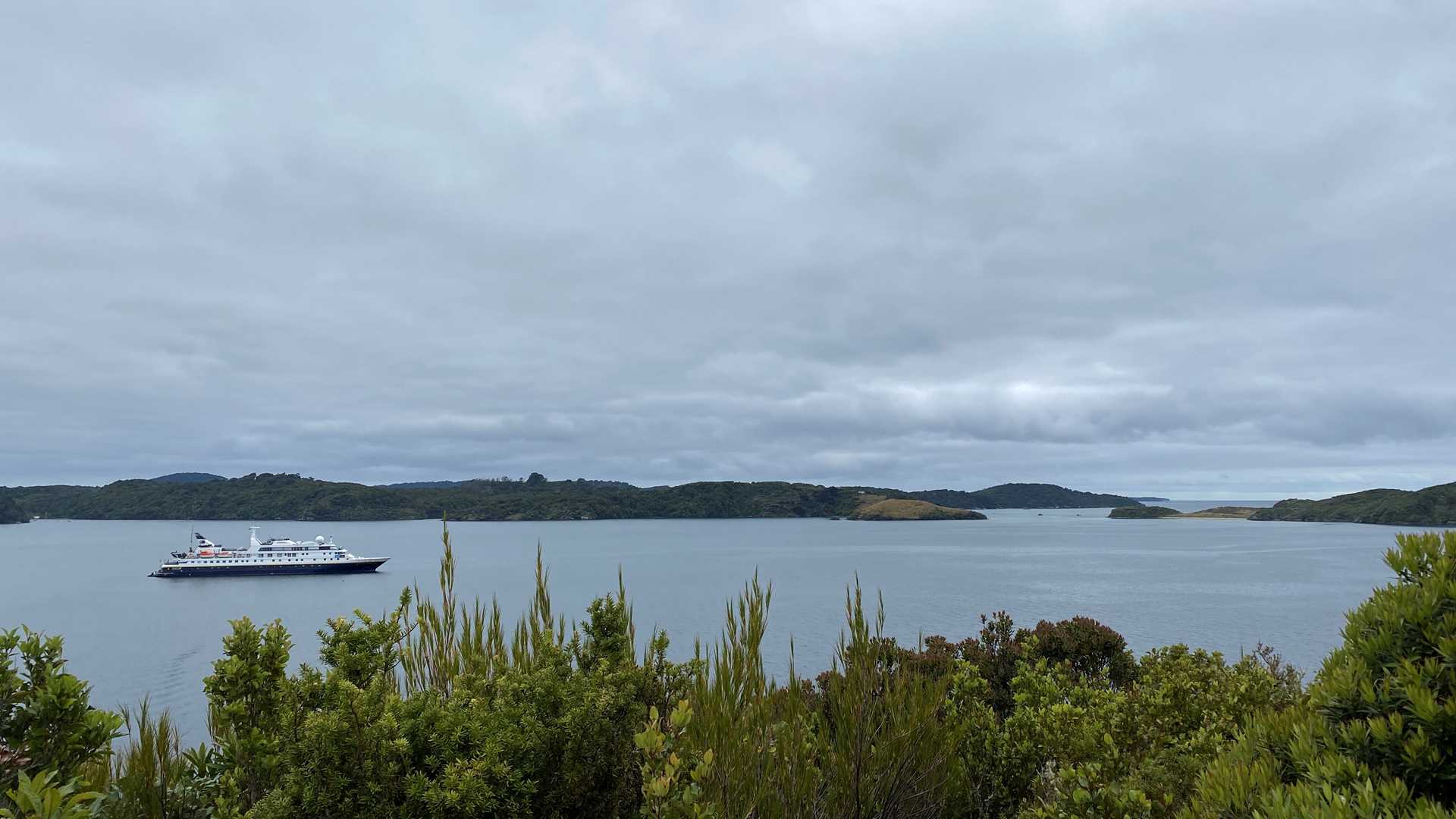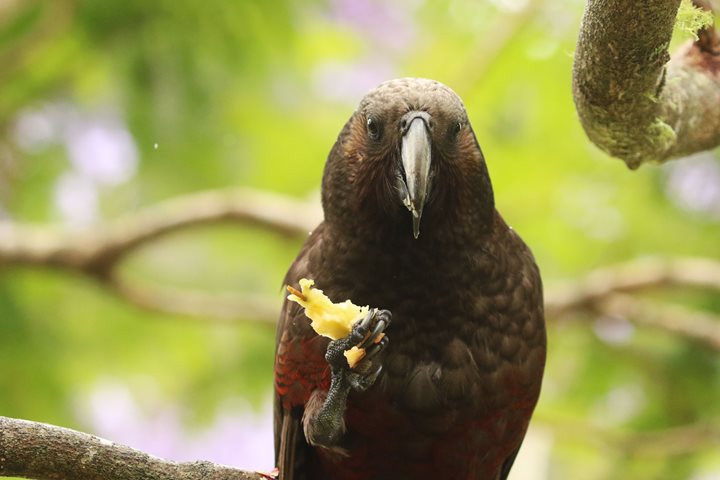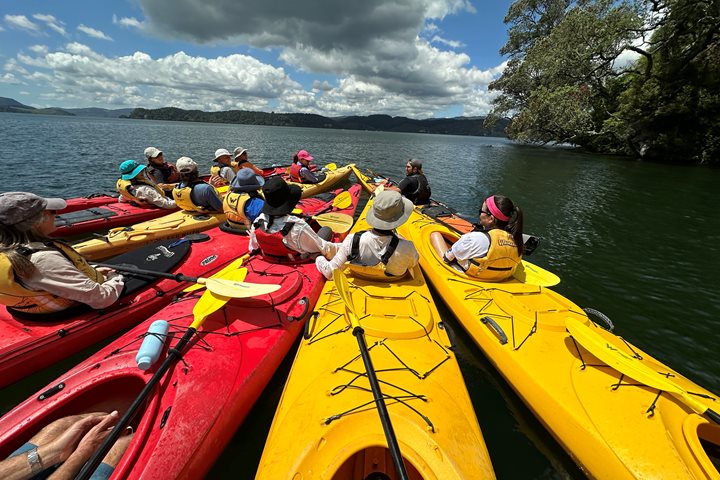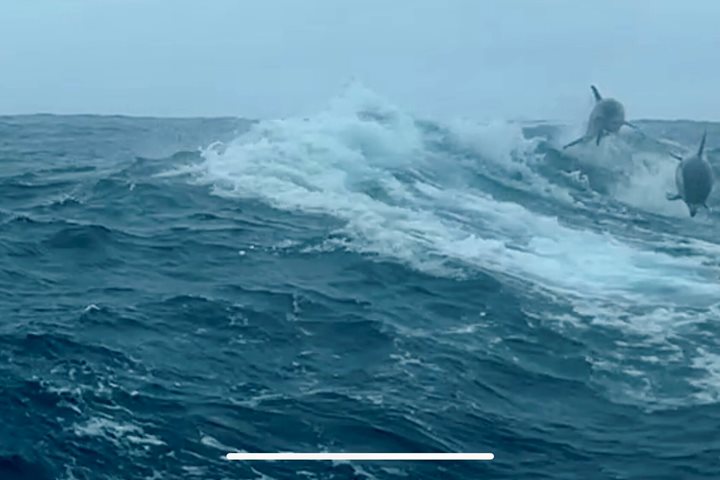We sailed south from Dunedin overnight, eager to begin our exploration of New Zealand’s ecosystems, wildlife, and cultural history. Albatrosses and Cape petrels welcomed us to an outdoor breakfast as Ulva Island came into view. Once ashore for guided walks, we were greeted at the dock by a Stewart Island weka. Flightless scavengers, wekas scour the forest floor and beach for invertebrates, lizards, and seeds. Our greeter was a delightful first glimpse into the region’s unique bird species.
Recognized for exceptional natural beauty and biodiversity, Ulva Island was designated in 1899 as one of New Zealand’s first reserves to protect its wildlife, landscapes, and timber; now, it is a national park and open island sanctuary. As a result, today we explored a first-generation podocarp forest whose largest trees are 500-1000 years old. The long, spiked leaves of juvenile lancewood, the gnarled and twisted southern rātā, the cascading and feathery rimu, epiphytic orchids, and a range of ground, perching, and tree ferns were among the vegetation highlights.
The first local post office opened in 1872 to serve residents dispersed along the shores of neighboring islands. At the time, the abundant leathery muttonbird scrub leaves were used as postcards and mailed throughout New Zealand; the postal service has since banned this practice. After extensive eradication efforts, Ulva Island was declared cleared of rats and other predatory pests in 1997. It continues to be protected by bait stations, rodent detecting dogs, and frequent surveys that identify and promptly address any hitchhiking rats that may find their way to the island. We spotted a great number of birds while hiking this morning, including the New Zealand wood pigeon (kerarū), the rare South Island saddleback (tīeke), vocal bellbirds (korimako), inquisitive Stewart Island robins (toutouwai), chattering red-crowned parakeets (kākāriki) in the high canopy, and tūī.
In the afternoon, National Geographic Orion visited the Stewart Island community of Oban for the first time, making a stop at the Rakiura Museum. Featuring stories and artifacts, the museum provided insight into historically significant industries, Maori culture, island life, local ecosystems, and endemic species. Tonight, we head south yet again – our next destination is the Sub-Antarctic Islands!







